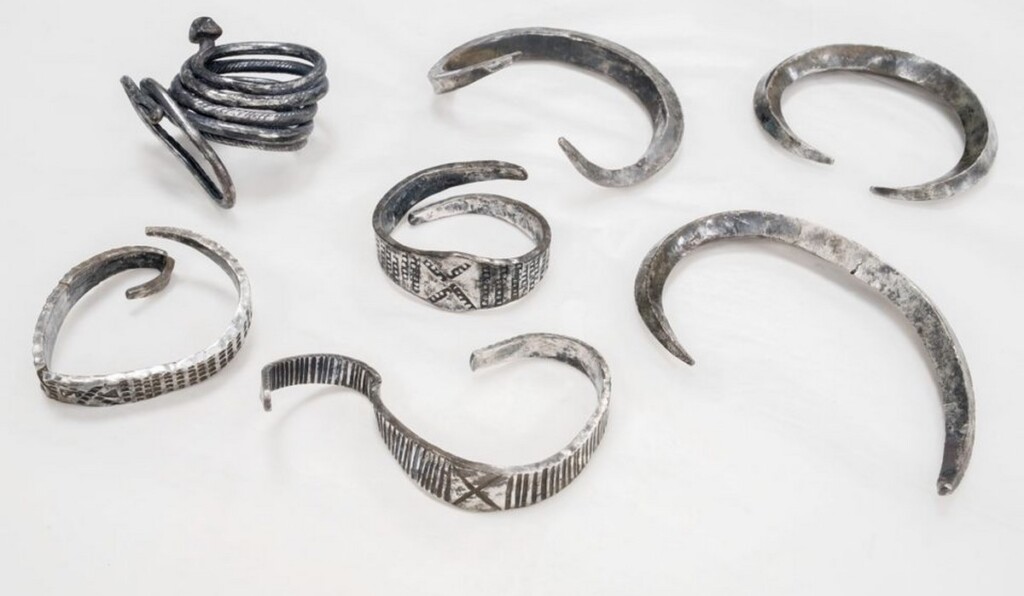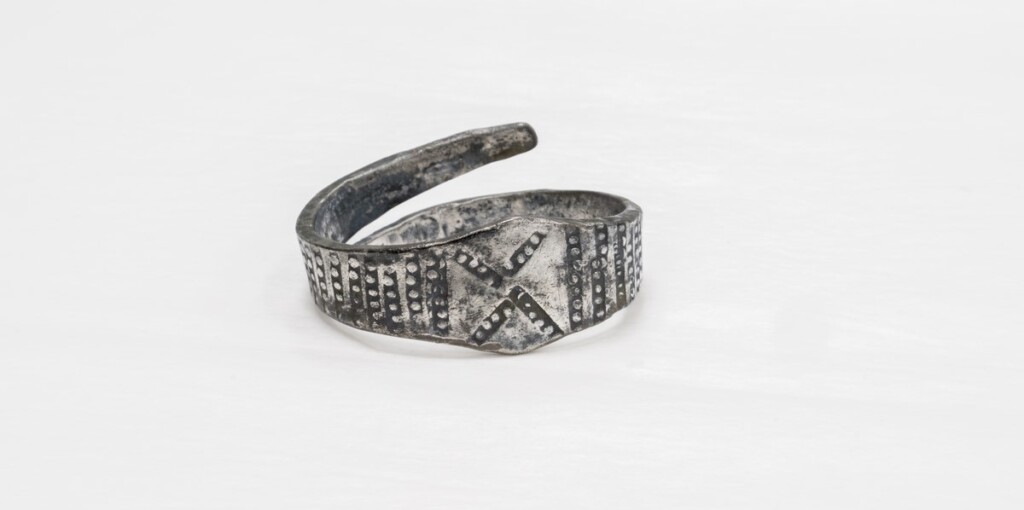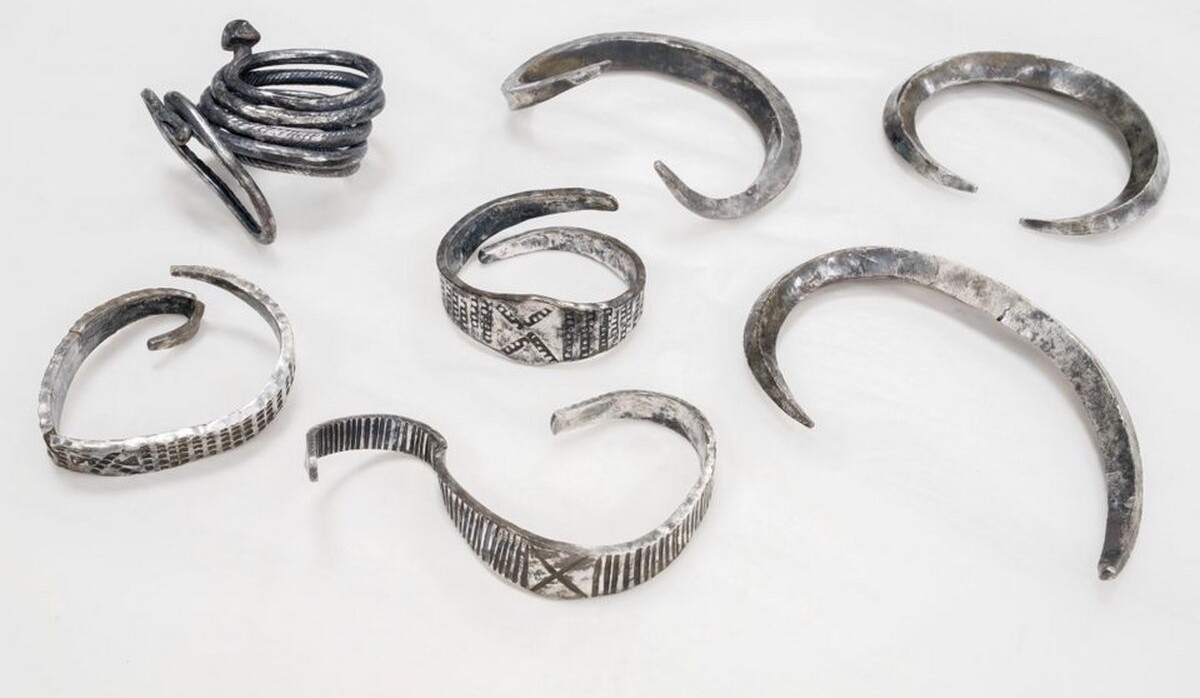
A 22-year-old Danish student has become the latest metal detective to dig up treasure buried by Vikings.
In the area around the Danish city of Aarhus, Gustav Bruunsgaard was out with his metal detector when it started beeping. The lad was already in an area where finds from the Viking Age have been uncovered, and one must have imagined he was excited.
He had every reason to be. He found a silver bracelet or arm ring, and returning later in the week, discovered another 6, which together weighed a little more than a pound of silver.
He reported his findings to the Moesgaard Museum in Højbjerg where the bracelets are currently on display. Experts at the museum reckon the rings date to the early 9th century, which, considering that Vikings were excellent storytellers, solidly would have represented the “good ole’ days” for them.
Generally considered to have been started in earnest after a famous raid on an English monetary in 793 CE, raiding Norsemen terrorized the coasts of Ireland, Scotland, England, France, Belgium, the Baltic nations, and some of the earliest Russian principalities along the Volga River.
In most of the early 9th century, this seaborne threat was too new, and local authorities too weak and decentralized to mount any meaningful defense against these invaders.

“The Elsted farm treasure is a fantastically interesting find from the Viking Age, which connects Aarhus with Russia and Ukraine in the east and the British Isles in the west,” Kasper H. Andersen, a historian at the museum, said in the statement.
One of the coiled rings is of a type that originally came from Russia or Ukraine, which has since been imitated in the Nordic countries. The three band-shaped, stamped rings are of a southern Scandinavian type, which inspired bangles in Ireland, where they became very common. The three smooth bangles are rare, but are known from Scandinavia and England.
“In this way, the find emphasizes how Aarhus was a central hub in the Viking world, which went all the way from the North Atlantic to Asia.”
All that raiding and trading generated enormous profit, and silver was the Viking Age’s measure of value, the museum statement explains.
NEWS FROM THE VIKING AGE: Thousand-Year-Old Viking Hall Fit for the Gods Unearthed By Archaeologists in Denmark
The seven bangles have a total weight of more than half a kilo. Bangles like these were adapted to a common weight system, so you could easily see the value of the individual rings. It served as a means of payment and transaction, as well as demonstrating the financial capacity of the owner.
YOU MAY ALSO LIKE: 1,000-Year-Old Viking Coins Found by Young Girl With Metal Detector in a Cornfield
It’s believed the buried bracelets represent a hoard of hacksilver, which behind silver coins minted in Constantinople, Europe, and the Arab world, served as a common medium of exchange. Rings like the ones Bruunsgaard found were used as reference weights so that pieces of looted silver could be “hacked” apart into the correct size for trading practices.
The objects thusly hacked tended to be jewelry, raw ingots, or pieces of religious paraphernalia.
GNN reported recently on a discovery about the necessary sophistication of Viking economics and jurisprudence.
SHARE This Fantastic Find With Your Friends Who Love Vikings…




















